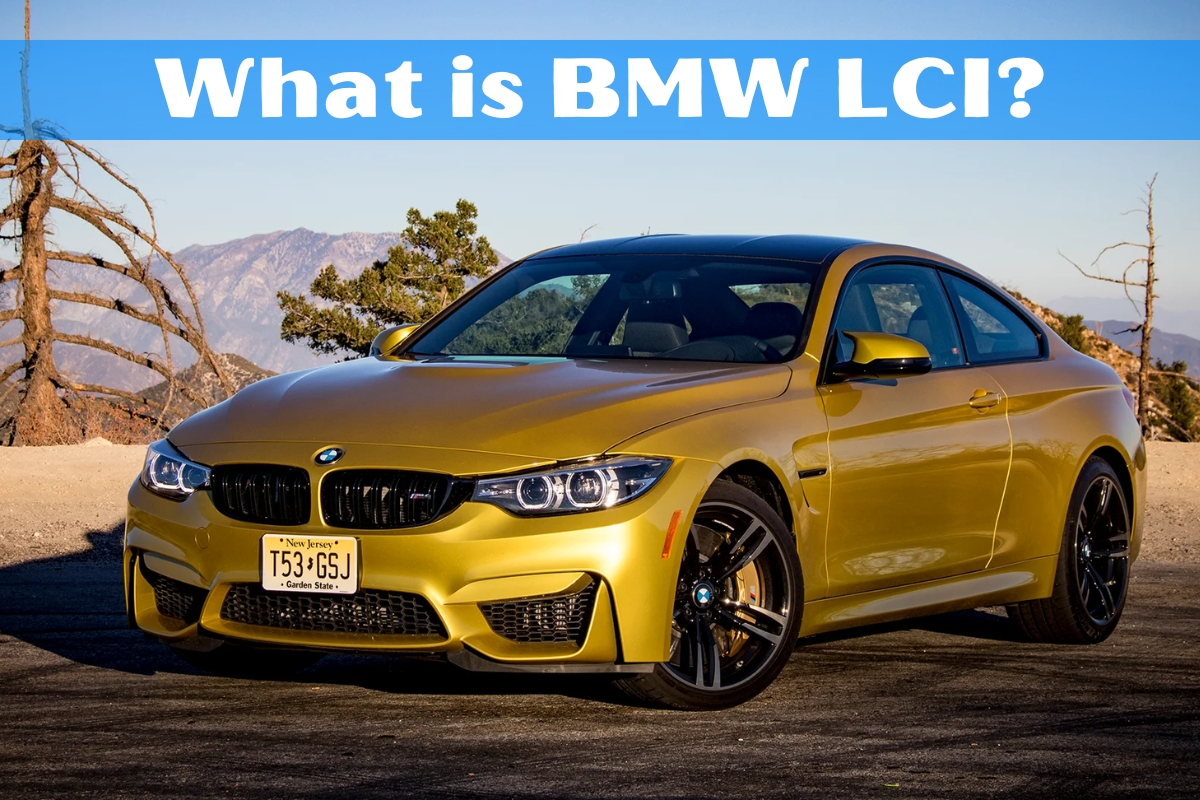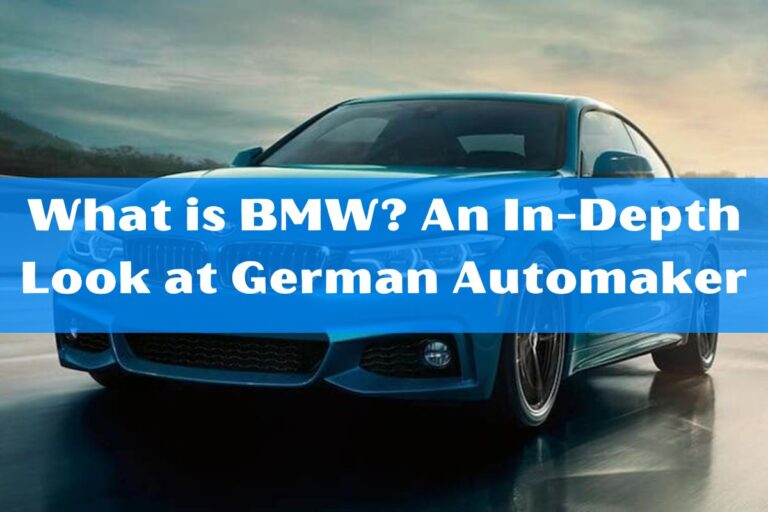What is BMW LCI? The Complete Guide to BMW Updates

Have you ever heard about BMW LCI models and wondered what it meant? Or maybe you’ve noticed BMWs that look a bit different from the norm – fresher, with tweaked styling and new features? Those are likely the BMW LCI versions.
In this guide, we’ll dive deep into everything you need to know about BMW’s Life Cycle Impulse (LCI) updates. We’ll explain what LCI means, why BMW does these updates, what gets changed, when they happen, and how to identify an LCI model. So buckle up and get ready to become an expert on this important part of the BMW model cycle!
What Does BMW LCI Mean?
LCI stands for Life Cycle Impulse. It’s basically BMW’s way of saying their vehicle has received a mid-cycle refresh or update.
Most BMW models have a lifespan of around 7 years before a full redesign. Rather than letting a model go stale halfway through that lifecycle, BMW gives it an “impulse” – a shot of new life through styling updates, new features, and sometimes mechanical enhancements.
So in essence, an LCI model is the updated, facelifted version of that particular BMW, not an all-new generation.
Why Does BMW Do LCI Updates?
There are a few key reasons why BMW implements these Life Cycle Impulse changes:
- Keep Models Fresh and Competitive
The automotive world moves quickly, with new models and updates from rivals always emerging. By refreshing a BMW 3-4 years into its lifecycle, BMW ensures their cars still look modern and have the latest tech/features to stay competitive.
- Give Buyers a Reason to Upgrade
If you just leased a brand new BMW, you probably don’t want the same exact car a few years later when your lease is up for renewal. The LCI updates give buyers a reason to upgrade to the latest look and features rather than go to another brand.
- Incorporate New Design/Tech
Over the course of 6-7 years, automotive design trends can shift and new technologies emerge. The LCI allows BMW to implement design updates and new tech that wasn’t available when the model was first launched.
What Gets Updated in a BMW LCI?
The extent of LCI changes can vary considerably between different BMW models, but there are some common areas that typically get revised:
Exterior Design Changes
One of the most obvious updates in a BMW LCI is the revised exterior styling. This often includes:
- New Headlight Designs: LCI headlights usually have a fresher look with updated LED/laser lighting signatures.
- Updated Taillights: Similarly, the taillights get reshaped with a new lighting pattern and LED/laser elements.
- Revised Grilles and Bumpers: The signature BMW kidney grilles are frequently updated, sometimes getting larger. The front and rear bumpers also get some nips and tucks.
- Other Exterior Tweaks: Depending on the model, the LCI may include additional changes like new wheel designs, revised trim pieces, or even slightly altered dimensions.
Some major examples of exterior revisions include the E90 3 Series LCI with its fresh headlights and slimmer grilles, and the recent G20 3 Series LCI with its larger grille and reshaped headlights/taillights.
Interior Updates
While not as obvious, the cabins of LCI models also get some love, often:
- New Material Trims and Upholstery Options: Refreshed interior trim pieces, new contrasting stitching, and sometimes new upholstery designs/colors.
- Updated Infotainment and iDrive System: The LCI frequently brings the latest version of BMW’s iDrive interface and infotainment tech.
- Other Control Interface Updates: Things like the gear selector, steering wheel controls, and HVAC controls may also get tweaked aesthetically.
Mechanical Updates
While more rare, BMW sometimes implements mechanical updates with an LCI model, such as:
- New Engine Options: Higher performance versions may get a modest power bump, or BMW could add a fresh engine to the lineup.
- Transmission Updates: Improvements or additions to transmission options for smoother, more efficient shifts.
- Suspension Refinements: LCI models can receive retuned dampers, springs, bushings for a more refined or sportier ride.
- Other Driveline Updates: Updates could include modified differentials, axles, new chassis bracing, and so on.
However, major mechanical overhauls are typically reserved for full model redesigns rather than LCI updates.
When Do LCI Updates Happen?
There’s no set schedule that applies to every BMW model’s LCI update. However, they generally tend to arrive around 3-4 years into a given model’s lifecycle.
Since most BMWs have a lifecycle of approximately 7 years between full redesigns, the LCI hits right about at the midway point. This allows BMW to keep the design and tech relatively fresh for the second half of that model’srun.
For some examples, the F30 3 Series received its LCI for the 2016 model year, about 4 years after the F30 was originally launched for 2012. The updated G20 3 Series LCI debuted for 2023, 4 years after the G20’s intro in 2019.
How to Identify a BMW LCI Model
One tricky aspect of BMW’s LCI updates is that they aren’t always clearly identified or marketed as such. Unlike a full redesign which gets a new model code, the LCI models retain their same nomenclature.
So how can you tell if a particular BMW is the updated LCI version or not? There are a few giveaways:
- Check for the Design Updates
As mentioned, the exterior styling updates like new headlights, grilles, bumpers etc. are usually the biggest giveaway that you’re looking at an LCI model. Once you’re familiar with those styling traits, they become quite apparent.
- Look at the Production Date/Year
Most LCI models start production 3-4 years after the pre-LCI versions debut. So if you see a G20 3 Series dated 2023 or later, you know it’s the updated LCI, since that generation started in 2019.
- Find Examples of Pre-LCI vs LCI
Do some research to see examples comparing the pre- and post-LCI versions of that specific BMW model. This makes it easier to spot the differences and identify which you’re looking at.
One thing to note is that LCI models aren’t always badged differently from the pre-LCI ones. So you can’t always go by the name/trim level.
Key Differences Between LCI and Pre-LCI BMWs
Speaking of comparing pre-LCI BMWs to LCI models, let’s look at some specific examples highlighting the differences:
- BMW E90 3 Series: The pre-LCI had droopy “frown” headlights and bulbous taillights. The LCI brought sleeker headlamps and reshaped taillights with LED elements.
- BMW F30 3 Series: LCI updates included revised headlights/taillights, updated Bluetooth/WiFi capabilities, new Active Security safety features, and styling tweaks to trim pieces.
- BMW G20 3 Series: This LCI refresh just happened, with key changes like a larger grille, reshaped headlights/taillights, and a power increase for the M340i.
The differences can be subtle like new interior trims and tech updates, or more visually apparent with fresh new lighting designs and restyled bodywork. But doing your research makes it easy to spot an LCI-updated BMW.
Should You Wait to Buy Until the LCI?
If you’re in the market for a new BMW, you might wonder if it’s worth holding off to get the LCI version when it arrives, or if you should just get the pre-LCI model. There are some pros and cons to each perspective:
Reasons to Wait for the LCI:
- You’ll get the absolute latest design and features
- Potential performance/tech upgrades over pre-LCI
- Updated styling may appeal to you more
Reasons to Get Pre-LCI:
- Available sooner rather than waiting
- Pricing could be better as pre-LCI model years closing
- Not concerned about having the ultra-latest version
There’s no right or wrong answer – it depends on your priorities and needs. If you’re someone who always wants the latest and greatest with the cutting edge design and tech, waiting for the LCI makes sense. If you just want a great BMW now and perhaps prefer the original design, getting a pre-LCI is perfectly fine.
Most Significant BMW LCI Updates
While LCI changes tend to be more evolutionary than revolutionary, some BMW models have seen quite dramatic transformations with their mid-cycle updates. Here are some of the most significant LCI makeovers in recent years:
BMW E90 3 Series LCI The pre-facelift E90 3 Series was handsome but a bit ungainly, with droopy “sad” headlights and bulbous taillamp designs. The 2009 LCI brought sweeping changes with sleeker headlamps, slimmer kidney grilles, and redesigned LED taillights. It transformed the E90 into a far more modern, athletic design.
BMW F20 1 Series LCI When it launched, the F20 1 Series hatchback was criticized for its frumpy, awkward styling. The LCI version totally turned that around with revised headlights, a bolder kidney grille, and a more aggressive front bumper treatment. Out back, the taillight graphics were refreshed for a cleaner, sportier look. Suddenly the 1 Series looked sharp and premium.
BMW G20 3 Series LCI As one of the most recent LCI updates, the G20 3 Series changes were highly anticipated. And BMW didn’t disappoint – the LCI brought a striking new frontal design with double-nostril kidney grilles, slimmer LED headlights, and updated front/rear bumpers. The M340i also got a power bump to an impressive 382 horsepower.
These are just a few examples, but they illustrate how BMW’s mid-cycle LCI updates can truly transform a vehicle’s look and positioning in the lineup when executed well.






